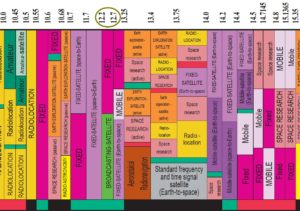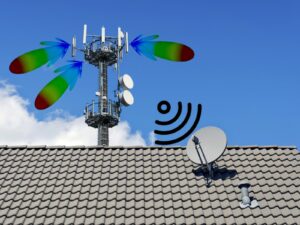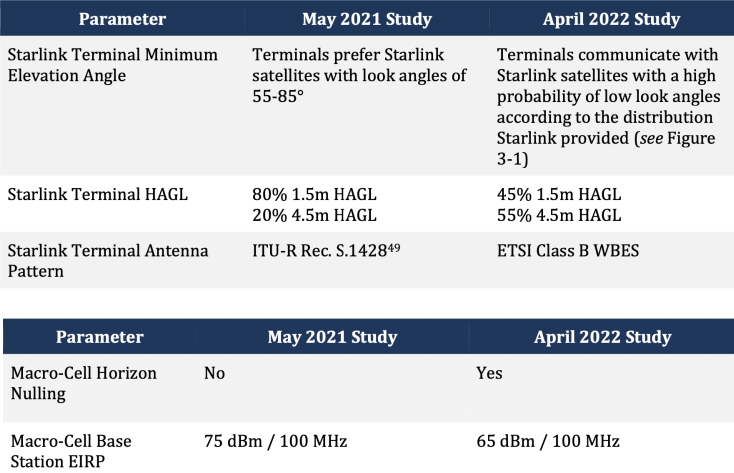FCC records are full of comments, replies, reports, and a slide deck citing contrasting positions on 12 GHz and the feasibility of it becoming part of 5G frequency allocations.
Proponents of using 12 GHz for 5G have filed an updated report with the FCC claiming that 5G can share the 12.2 GHz to 12.7 GHz band with satellite incumbents. The report, based on a simulation, claims that there’s a 99.85% chance that terrestrial 5G won’t interfere with downlink satellite TV nor internet access. Thus, proponents say, the FCC should amend its rules regarding use of that spectrum to accommodate 5G. 5G Technology World recently spoke with Jeffrey Blum of DISH Networks and V. Noah Campbell of RS Access as well as attorney Andrew Schwartzman, all proponents of a rule change.
Figure 1. The U.S. Frequency allocation chart shows the current state of the 12.2 GHz to 12.7 GHz band.
“We want to share the 12 GHz spectrum with SpaceX,” said Blum. Unlike Citizens Broadband Radio Service (CBRS), which uses spectrum sharing, that’s not an option at 12 GHz. For CBRS, the incumbent (U.S. Navy) uses the band only when it’s needed. When that occurs, the Navy gets priority to use the frequency. Satellite TV, however, broadcasts 24 hours a day on a portion of the 12 GHz band (Figure 1). Customers won’t tolerate a service interruption. Another part of the 500 MHz in question is available for earth-to-space communication.
Advocates for 12 GHz claim that terrestrial 5G won’t interfere with satellite transmissions because the two signals approach their destinations from significantly different angles. In addition, 5G uses beam steering and MIMO to focus signal beams from the tower to the ground, that’s relatively parallel with the Earth’s surface compared to the angle from a satellite (Figure 2).
Satellite internet provider Starlink, a service of SpaceX, owns the rights to some of the 12 GHz spectrum along with DISH and others. Starlink wants to use the bandwidth to provide internet service in rural areas.
A letter to the FCC dated April 4, 2022, says “SpaceX uses the 12 GHz spectrum to an uncertain extent but has no proven need for it in light of the vast other spectrum to which non-geostationary orbit (NGSO) satellite systems have access. In fact, the 12 GHz band represents only 3% of SpaceX’s already licensed spectrum of 15,550 MHz.”
The letter continues by challenging SpaceX’s claim regarding angles of signals to the satellites. “SpaceX does not address the fact that comparatively low elevation angles translate into
service of unacceptable quality. Nor does SpaceX address the diagram that DISH referenced from Starlink’s own user instruction manual showing the importance that SpaceX places on
avoiding obstructions and ensuring an elevation angle of at least 60 degrees and routinely up to 80 degrees. Rather, SpaceX claims obstructions matter precisely because SpaceX operates at lower elevation angles. That argument is not credible: SpaceX has a license to operate a satellite system, not level trees or demolish buildings. So long as obstructions exist, SpaceX will
be hampered, or even precluded, from operating at low angles. And, when it is not advocating before the Commission, SpaceX admits that its earth stations cannot receive communications
from satellites at lower elevation angles because: “obstructions generally cause outages.”
According to Campbell, SpaceX says the FCC shouldn’t look at the study but doesn’t give sufficient reason why. In a letter to the FCC dated June 1, 2022, Campbell said “Even after accounting for SpaceX’s preferred modeling assumptions, however dubious, RKF finds that 5G operations would have no effect on at least 99.85% of NGSO operations in the 12 GHz band. Furthermore because 12.2-12.7 GHz is only a portion of the downlink spectrum available to NGSO operators, the remote (at most 0.15%) probability of interference specifically at the 12.2-12.7 GHz portion, would likely be unnoticable to consumers.”
Given that there are 86,400 seconds per day with a 0.15% (0.0015) chance of interference, that means on average, interference might occur in 129.6 sec. Consumers might not care unless those seconds occur in rapid succession, causing them to miss a goal, touchdown, home run, or a good punchline.
In a filing the same day, SpaceX calls the entire proposition “dubious,” saying that the proposition to use 12 GHz for 5G “would cause massive harmful interference to consumers of incumbent fixed-satellite services.” The paragraph doesn’t, however, define “harmful interference” in a technical manner. Instead, SpaceX discusses business reasons for its “dubious” claim.
Why a second study? According to Campbell and Blum, the second study conducted by RKF adjusted for different signal angles put forth by Starlink, plus additional refinements. The table cites the differences in the two Monte Carlo simulations from the 2021 and 2022 studies.
The 12 GHz controversy has turned into a shouting match with each side claiming the other’s arguments are “dubious.” In a letter dated June 3, 2022, SpaceX claims that the RKF analysis is flawed, saying such things as
- RKF continues to model a terrestrial deployment that covers only 10% of the population in each license area.
- RKF continues to model a de facto geographic separation of terrestrial and NGSO Operations.
- RKF continues to ignore all NGSO systems other than SpaceX.
- RKF continues to assume that the entire 10.7-12.7 GHz band is available for SpaceX downlinks to customers.
This battle won’t end anytime soon. At some point, simulations won’t be enough to prove the presence or absence of interference. We’ll need some real-world measurements to settle this score.
All filed FCC documents relating to 12 GHz 5G are available here. You can also download the slide deck.




